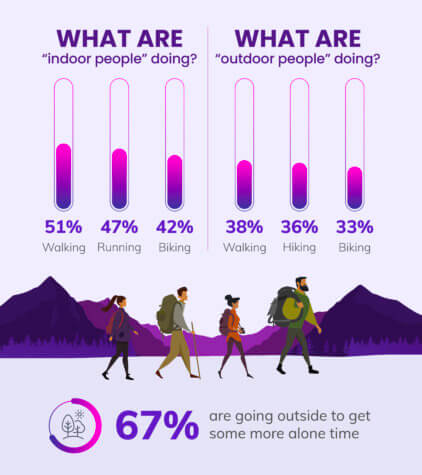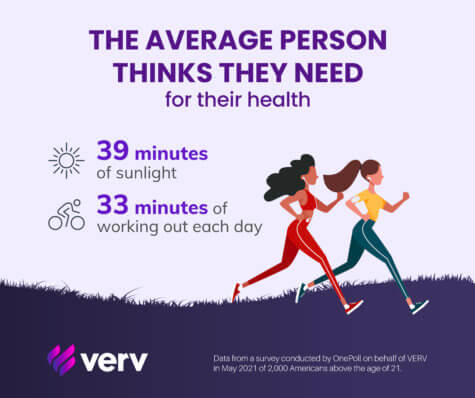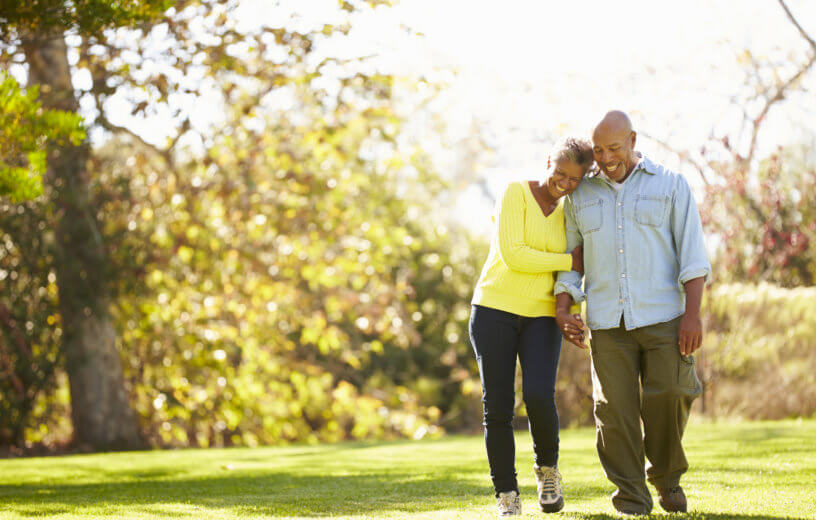NEW YORK — If you think COVID quarantine may have been no big deal for the average couch potato, think again. A new study finds nearly three in five Americans have transformed from “indoor people” to “outdoor people” during the pandemic.
The survey of 2,000 respondents over the age of 21 reveals that “indoor people” have added 22 minutes a week to their outdoor regimen since last year. The top reason for venturing outside? For 67 percent, it’s to get away from the people they stay indoors with the rest of the day. That trend shows no sign of slowing with summer approaching, as people plan to increase their outdoor time by four more hours each week as the weather gets warmer.
From house hermits to avid walkers
 The survey also looked at the personality differences between those who originally identified as “indoor” and “outdoor” types before COVID. Those identifying as “indoor” types are more likely to be morning people (61%), more likely to claim their lives are “mostly perfect” (71%), and more hesitant to try new things out of fear of failure (68%).
The survey also looked at the personality differences between those who originally identified as “indoor” and “outdoor” types before COVID. Those identifying as “indoor” types are more likely to be morning people (61%), more likely to claim their lives are “mostly perfect” (71%), and more hesitant to try new things out of fear of failure (68%).
Conducted by OnePoll and commissioned by the health and fitness app Verv, researchers also discovered that men are more likely to embrace the outdoors (75%) than women (51%), and nearly two in five brand new “outdoorsy” people are between ages 25 and 40. Overall, results suggest that the average respondent went outside for around five hours per week last year. That translates to 260 hours, or 10 whole days, over the length of 2020.
“Recent scientific reports have found that spending just 120 minutes per week in nature can decrease inflammation, boost activity in infection-fighting white blood cells and lower blood pressure,” says Luba Pashkovskaya, CEO of Verv, in a statement. “That kind of noticeable health benefit is especially important now, when so many people are struggling both mentally and physically from their recent pandemic experiences.”
Surprisingly, the past year is even turning “indoor people” into social butterflies, as they’re already planning to go outside for socially distanced hangouts with family (57%) and friends (56%). Their newly-acquired thirst for fresh air is also shining through in respondents’ workout choices. Breaking away from their indoor lifestyles, these respondents now tend to prefer walking (51%), running (47%), and biking (42%) over indoor activities like yoga (37%) and Pilates (26%).
Did you get your steps in today?
 When it comes to walking, Americans are also aiming to take 2,500 steps a day. That’s about a quarter of the 10,000-step fitness goal myth.
When it comes to walking, Americans are also aiming to take 2,500 steps a day. That’s about a quarter of the 10,000-step fitness goal myth.
“10,000 steps is a hard goal for many people, and not one that’s rooted in any kind of scientific origin,” admits Pashkovskaya. “In fact, a recent Harvard study found that people who walk an average of 4,400 steps a day still have significantly reduced mortality rates compared to those who only walk 2,700 a day. So really, the best and most feasible way to improve your health is to aim for 2,000 more steps than you usually take.”
The study also reveals that last year, the typical respondent spent five hours per week doing physical activity, at an overall average of 240 hours for the entire year. That’s close to the same amount of time people spent outdoors and more than the four hours per week than they consider to be optimal for adult health. Overall, the average respondent estimates that a daily workout should be 33 minutes long at above-average intensity.
